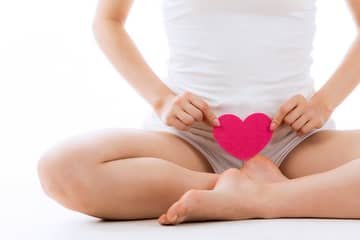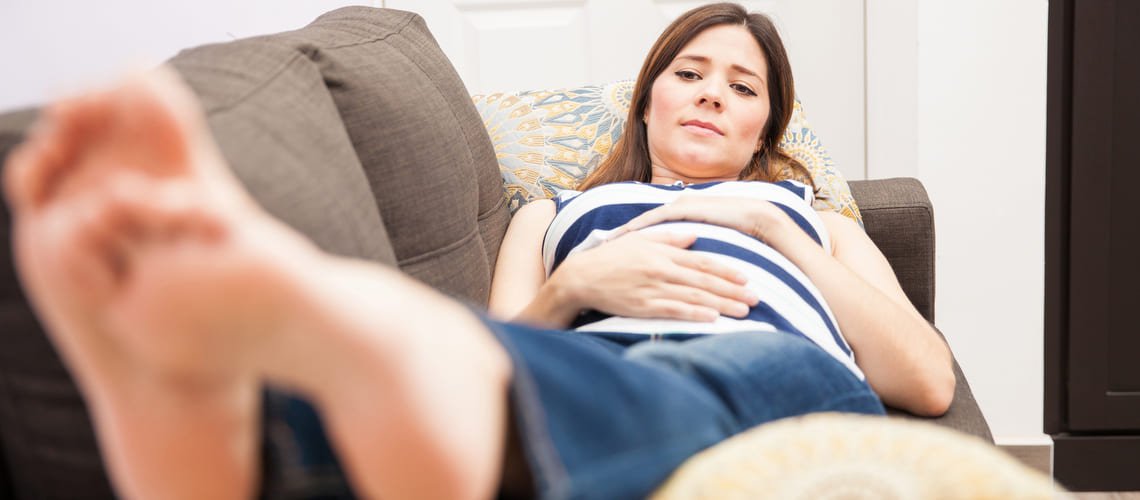
Swollen legs in pregnancy. Which helps with leg pain and swelling
Swelling in pregnancy affects more than 75% of pregnant women. It is primarily swelling of the lower limbs, i.e. swelling of the ankles, feet and calves. Less commonly, swelling occurs on the hands, wrists, fingers, or face. This is typical for the later stage of pregnancy. Swollen legs during pregnancy are not unusual. However, it is important to monitor the degree of swelling and, in case they appear, it is advisable to apply procedures that will relieve the woman from swelling. This will prevent further difficulties from arising. Hormonal changes, body hydration and increasing body weight contribute to swelling in pregnant women. Is leg pain in pregnancy okay? When does leg swelling start during pregnancy?
The feeling of heavy legs, swollen feet, calves or ankles, impaired mobility, or even leg pain are not pleasant at all, and pregnant women encounter this feeling very often. The reason is the metabolic changes of the body. A woman's body gets used to the course of pregnancy, which often brings less pleasant accompanying symptoms. Swelling of the limbs is caused by water and its accumulation in a certain part of the body. Waterlogging of the body during pregnancy, especially in the later phase, is very natural. Swellings appear more intensively in the 3rd trimester of pregnancy, but with increasing kilograms and changes in the body, they can start around the 20th week or even in the beginning of pregnancy, when the body retains more water. Attention should be paid to cases in which swelling can be dangerous.
Formation of swellings in pregnancy
Swollen limbs are one of the most common causes of complaints by expectant mothers during pregnancy. They concern more than 75% of pregnant women. It is primarily swelling of the lower limbs - feet, ankles, calves, but wrists, fingers or face can also swell quite often. The appearance of swelling is mainly characteristic of the third trimester of pregnancy, but changes in metabolism can easily cause swelling of the lower limbs to appear in the earlier phase of pregnancy or around the 20th week.
Swollen legs during pregnancy are most intense in the evening hours. Specifically, swelling is much more intense during hot summer days. In warm weather, blood vessels try to cool themselves by expanding, but at the same time, blood flows more slowly and accumulates in the vessels.
Why does limb swelling - edema actually occur? Swelling of the legs during pregnancy is caused primarily by waterlogging of the body. The body of the expectant mother creates water reserves in its tissues, which is caused by hormonal and metabolic changes. There are changes in the use and absorption of proteins, and the volume of blood in the bloodstream also increases. Gaining weight during pregnancy is also one of the factors that influence the occurrence of swelling. More pronounced swelling of the legs can also appear in women who experience a sudden weight gain during pregnancy.
In the later stages of pregnancy, the fetus presses on the vena cava, through which blood flows from the lower limbs to the heart, the uterus and fetus become significantly larger, and the blood flow worsens. The blood in the circulatory system flows more slowly, and this causes swelling - edema, varicose veins or leg pain. After childbirth, the swelling subsides relatively quickly, because excess fluids are eliminated through urine and sweat.
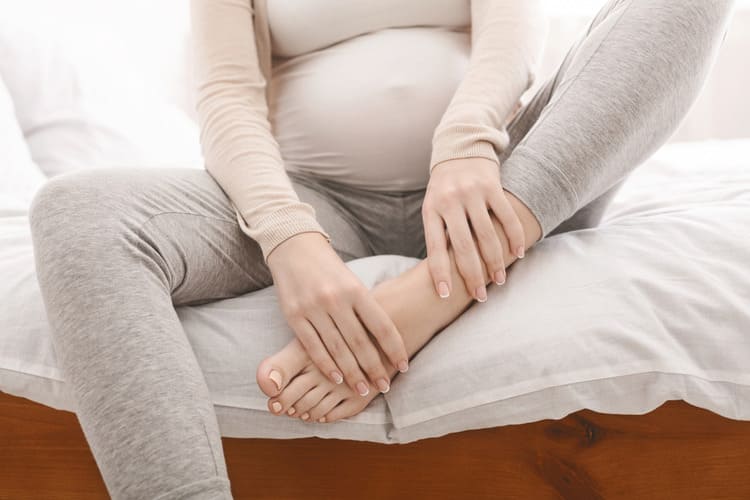
When are swellings in pregnancy dangerous?
Despite the fact that swelling of the legs during pregnancy is not unusual, in certain cases it is necessary to pay more attention. You can recognize a standard swelling by squeezing the area that appears to be swollen, leaving a hole in the tissue. If the swelling intensifies before going to bed, but subsides during the night, there is no reason to worry. In any case, it is advisable to report the presence of swelling to your doctor, at any stage of pregnancy. Despite the fact that the swelling is more intense a few weeks before childbirth, always consult a doctor in time to avoid possible problems. Some of the symptoms may indicate the presence of more serious health complications. It is good to pay attention if:
- there is no reduction of swelling and their retreat even in rest mode, on the contrary, the condition worsens,
- edemas repeatedly appear suddenly, possibly on different parts of the body,
- swelling appears on the hands, thighs and face,
- if the swelling is accompanied by palpitations, increased blood pressure, nausea, pain in the limbs or more frequent dizziness...
- the pregnant woman has an anamnesis from a previous pregnancy, for example in the form of preeclampsia, gestational diabetes or another diagnosis that poses a risk.
Preeclampsia in pregnancy
In connection with swelling, one of the serious conditions can be preeclampsia. This condition is also manifested by swelling of other parts of the body, for example, swollen hands during pregnancy, fingers, wrists or face. At the same time, the swelling does not go away. However, edema is not the only symptom of preeclampsia, for example, dizziness, shortness of breath, palpitations, high blood pressure, visual disturbances and nausea are much more significant. The occurrence of preeclampsia can be confirmed by a urine test, in which, if there are proteins at a certain level, the disease can be confirmed with a high probability. This is a serious disease of the placental vessels, which are not widened enough to supply the fetus with oxygen and blood. Immediate diagnosis by a doctor and the setting of medical treatment are necessary.
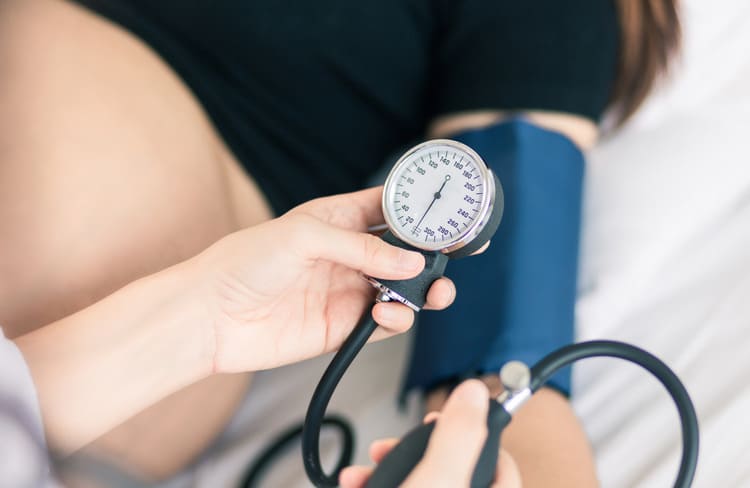
Uniform or asymmetric swelling of the limbs
Symmetrical or uniform swelling affects both limbs to the same extent. It is true that with uniform swelling, there is usually uniform swelling of the limbs during rest and after assuming a resting position. Such swellings do not need to be treated in any way. Swollen hands during pregnancy are very typical for the end of pregnancy, and there is no need to be immediately alarmed by such symptoms. Notice whether the swelling is asymmetrical or painful.
More serious are the cases when the swelling is asymmetrical, for example on only one leg. It can be the presence of local inflammation or venous thrombosis. In such a case, the typical symptom is pain in the given limb. A blood clotting disorder can also be the cause of asymmetric leg swelling. This disease can only manifest itself during pregnancy. A blood test and assessment of the results by a hematologist is necessary. Swelling is a typical symptom of improper blood clotting in a given limb. The condition needs to be treated, because otherwise it can lead to thrombosis - blockage of a blood vessel by a blood clot. Primarily, it involves the administration of substances that will ensure adequate dilution of the blood and its better circulation in the bloodstream.
Prevention of leg swelling
In the event that swelling occurs, it is possible to apply certain known procedures that can relieve the standard swelling. Swollen legs during pregnancy represent a state of discomfort for many women. If you want to eliminate the formation of swelling, you may also find the following advice useful, which can work as prevention to a certain extent. What to do to prevent edema ?
- Changing your lifestyle and adjusting your diet can significantly help to eliminate swelling during pregnancy. Avoid foods with a high fat and sugar content. Try to salt the food as little as possible, because it is salt that retains water in the body. Eat plenty of fruits and vegetables, which are great sources of fiber.
- Follow the drinking regime, do not try to drink less, but avoid sweetened drinks or mineral waters with a high sodium content. You can also include herbal teas in your drinking regimen. Conversely, limit caffeine.
- Regular and adequate movement is the basis for adequate circulation of the limbs in the body. So try to regularly alternate sitting with walking or even include suitable exercises. Even while lying or sitting, occasionally change positions to better circulate the blood in the body.
- A suitable prevention is wearing elastic stockings.
- Avoid high heels and prefer comfortable sports shoes.
- Wear loose clothing, including socks.
- Treat yourself to rest, avoid stress and excessive physical exertion.
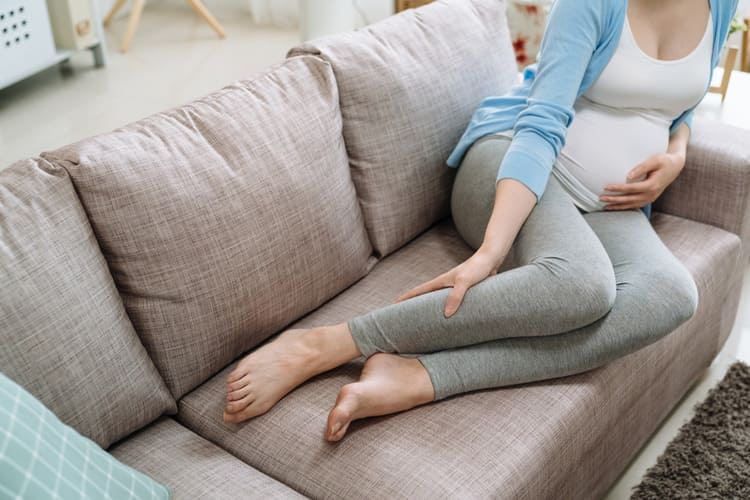
Swelling in pregnancy and effective help
If you develop edemas and register them in the evening or even during the day, there are several ways you can ensure that the swellings are reduced or completely subsided. Of course, the case of each pregnant woman may be different. Most of the mentioned methods should help you to eliminate edema. What should I do if I want to get rid of swollen legs as quickly as possible ?
- Placing your feet above heart level whenever possible.
- Showering the feet with the help of alternating cold and warm water.
- Foot massage with gentle pressure or with the help of a tennis ball. You can also use massage oils or creams that promote blood circulation in the limbs.
- Sleeping on the left side represents a relief position and thus a better functioning of the circulatory system is possible.
- Vascular gymnastics, which represents specific movements helping to improve blood circulation in the lower limbs. For example, circling the ankles while standing or while sitting, straightening the toes and heels of the feet and other smaller movements with the feet.
- Pregnancy exercises or exercise on a fitness ball.
Swelling of the legs during pregnancy - experience
Swollen legs during pregnancy are solved by many mothers and pregnant women. As part of the discussions, they are mainly concerned about whether the swelling is a symptom of more serious diseases. In case of swelling, women often recommend placing their legs on a table or supporting them with pillows. A cold foot shower also helped them. Even proven advice did not help some women in the phase before childbirth. Several mothers stated that they got rid of the swelling only shortly after giving birth. Some of the discussants also recommend consulting a doctor or visiting him in case of swelling, so that urine and blood can be examined and possible complications can be ruled out.
The most frequent questions - FAQ
Swollen legs during pregnancy are as typical for many women as morning sickness. What is your experience with leg pain and swelling during pregnancy? What helped you to reduce swelling? We will be very happy if you join the discussion and share your advice, tips, tricks, experiences and recommendations that can help other women who are facing such a problem.
When is leg swelling dangerous during pregnancy?
What helps with swollen feet?
When do swollen legs appear during pregnancy?
Pridať komentár

